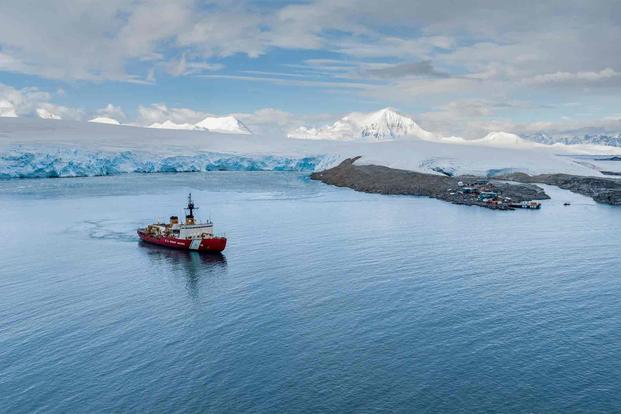Ella Sherman

The United States does not have enough icebreaker ships to compete in the Arctic the way Russia can with its much larger fleet, a U.S. military commander warned.
U.S. Air Force Gen. Gregory M. Guillot, the commander of U.S. Northern Command and North American Aerospace Defense Command, said on Thursday that the U.S. currently has really only one heavy icebreaker ship for Arctic operations while Russia has approximately 40 available.
"We do appreciate that the Coast Guard is procuring more icebreakers, but even with those, we will be severely outnumbered," Guillot said during a U.S. Committee on Armed Services hearing. "That does limit our freedom of maneuver in that region."
Icebreaker ships are special-purpose vessels designed with a stronger hull, a very specific shape, and greater power to effectively break through thick ice blocking access to strategic waterways and clear paths for other ships.
The one available heavy U.S. icebreaker is the USCGC Polar Star, and then there is the medium icebreaker Healy. Another vessel has been out of action for years.
Maine Sen. Angus King expressed concerns during the hearing Thursday about the icebreaker "gap" or deficit and urged that the U.S. military not wait to build up defenses in the Arctic as Russia increases its own military presence in the region.
To the senator, not having sufficient icebreakers is unproductive, like "not having a road to get where you need to get."
Russia has deployed nuclear-powered icebreakers called Arktika and Sibir, which have been characterized as the largest and strongest icebreaker ships in the world.
This isn't the first time alarms have sounded over the lack of icebreakers. Last fall, the US had a noticeable icebreaker gap, and lawmakers determined that investing in the Coast Guard is crucial for maintaining momentum in the Arctic.
"We need to make sure that we are trying to close a very very significant icebreaker gap,” Alaska Sen. Dan Sullivan said at the time. "Even China's icebreaker capacity is on pace to surpass ours in 2025," he said, "and they are not even an Arctic nation."
For more than 20 years, the Coast Guard has been asking for funds for the Arctic, but those requests have been deferred, U.S. Coast Guard Vice Admiral Peter W. Gautier said last year. Now, conversations around Arctic militarization are being discussed amid proposals for the 2025 fiscal year budget.
In addition to Russia becoming more active, China has also shared Arctic aspirations.
With growing threats in this region, the U.S. military has been increasingly looking at Arctic training. U.S. Navy SEALs, for instance, recently conducted training operations deep in the Arctic, and the Army just recently wrapped a large-scale training exercise in Alaska to prepare soldiers for war in challenging environments and sub-zero temperatures.
No comments:
Post a Comment